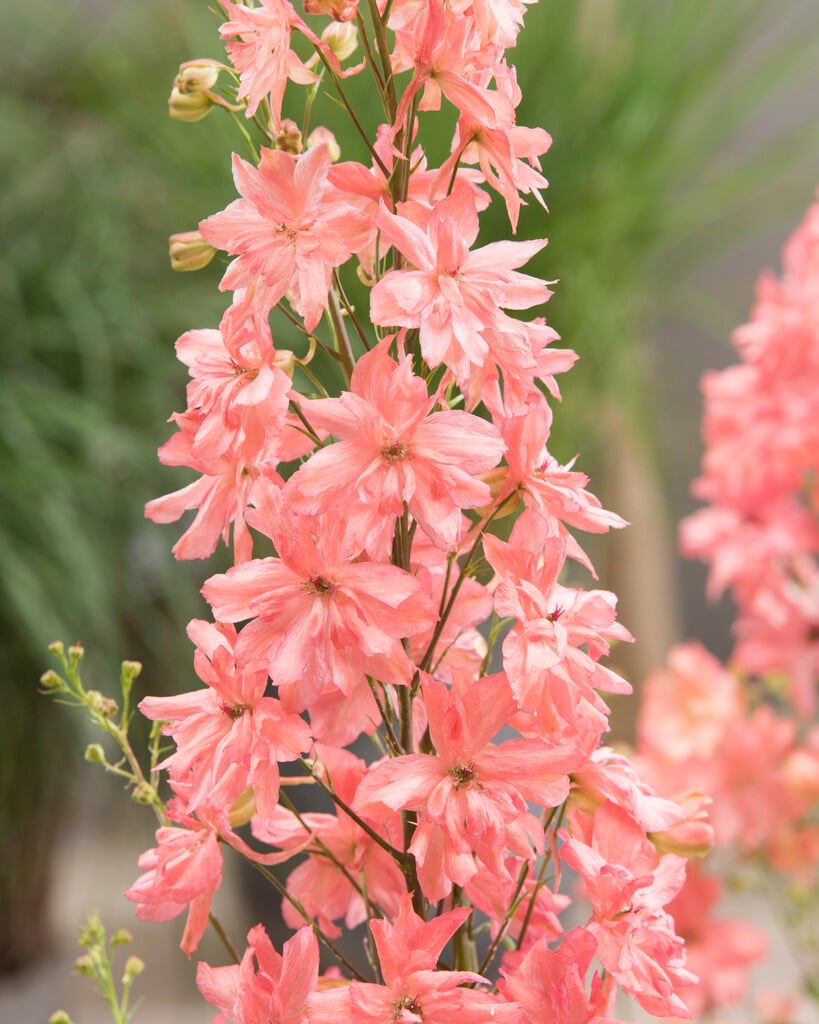Delphinium Princess Caroline ('Odabar')
delphinium [Princess Caroline]
A medium-sized variety with strong, upright stems producing masses of densely-packed salmon-pink flowers with red stripes from early to midsummer

Buy this plant
Size
Ultimate height
0.5–1 metresTime to ultimate height
2–5 yearsUltimate spread
0.5–1 metresGrowing conditions
Moisture
Moist but well–drained, Well–drainedpH
Acid, Alkaline, NeutralColour & scent
| Stem | Flower | Foliage | Fruit | |
| Spring | Green | |||
|---|---|---|---|---|
| Summer | Purple | Green | ||
| Autumn | ||||
| Winter |
Position
- Full sun
Aspect
South–facing or East–facing or West–facing
Exposure
Sheltered Hardiness
H5Botanical details
- Family
- Ranunculaceae
- Native to GB / Ireland
- No
- Foliage
- Deciduous
- Habit
- Columnar upright
- Potentially harmful
- Humans/Pets: Harmful if eaten. Wear gloves and other protective equipment when handling. For further information and contact numbers regarding pets, see the HTA guide to potentially harmful plants
- Genus
Delphinium can be annuals, biennials or perennials, with palmately lobed basal leaves and showy bowl-shaped flowers in spikes, racemes or panicles
- Name status
Trade
How to grow
Cultivation
Grow in fertile, well-drained soil in full sun. Shelter from strong winds and provide support (see staking: perennials). Divide every 2-5 years to maintain vigour. Grow in fertile, well-drained soil in full sun. Shelter from strong winds and provide support (see staking: perennials). Divide every 2-5 years to maintain vigour. Grow in fertile, well-drained soil in full sun. Shelter from strong winds and provide support. See staking: perennials and delphinium cultivation for further advice
Propagation
Propagate by taking pencil thick basal cuttings in early spring or propagate by seed in spring or autumn (cultivars will not come true)
Suggested planting locations and garden types
- Cottage and informal garden
- Flower borders and beds
- Wall side borders
Pruning
Deadhead spent flower spikes. After flowering, cut down all growth to ground level. If fed and watered well, a second flush of flowers will be produced in autumn
Pests
May be susceptible to aphids, earwigs, delphinium leaf miner, delphinium moth caterpillars, slugs, snails and caterpillars
Diseases
May be susceptible to powdery mildews, delphinium black blotch, crown rot and viruses
Love gardening
Sign up to receive regular gardening tips, inspiration, offers and more
View our Privacy Policy
Get involved
The Royal Horticultural Society is the UK’s leading gardening charity. We aim to enrich everyone’s life through plants, and make the UK a greener and more beautiful place.